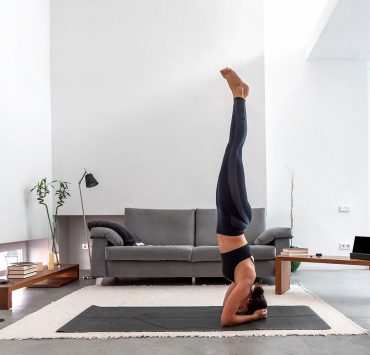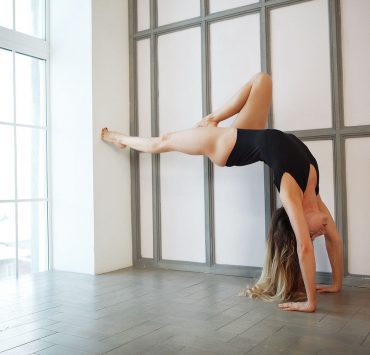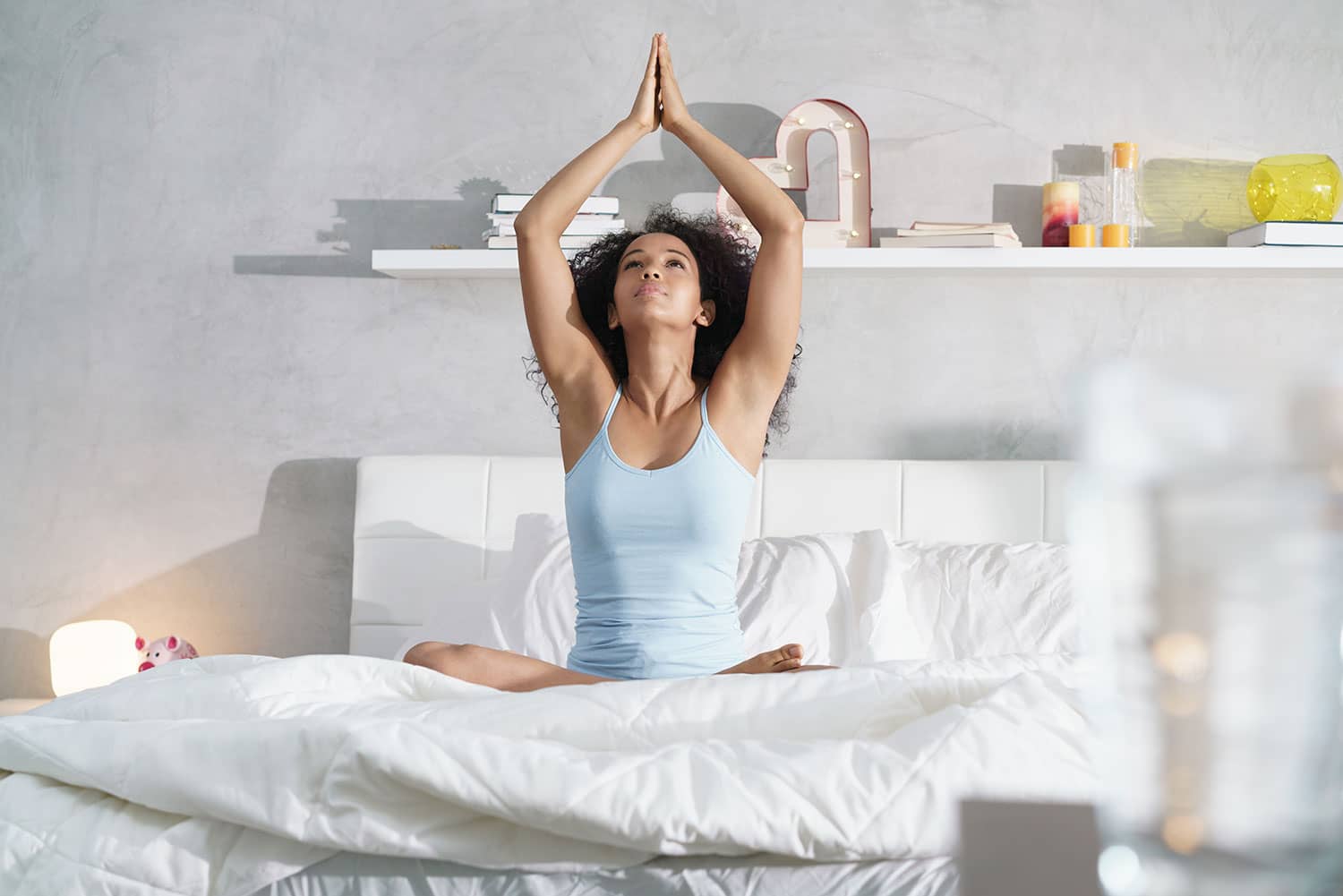
A graduate of Arizona State University, Nicole Baker is a…
Yoga is known for its many benefits to help build strength, increase flexibility, and assist with mobility. It can also help practitioners get a restful night’s sleep. When people practice yoga regularly, they are able to sleep for longer periods of time, go to sleep more easily, and go back to bed sooner in the event that they wake up in the middle of the night.
Pairing yoga with a wind-down routine can create optimal results for better sleep. Wind down routines are habitual and relaxing behaviors performed at the same time each evening. Practice before going to bed to help signal to your body that it is time to go to sleep.
The following yoga poses practiced before bed will help you destress, stretch, and signal to your body it’s time to rest. Before practicing, change into comfortable clothes like warm and cozy pajamas, power down screens and notifications on your electronic devices, and create a relaxing environment to practice yoga in.
You can practice the following sequence anywhere you like but it is recommended to be near a wall. It could also be helpful to have a pillow nearby and a blanket. As you practice, try to avoid striving to perfect postures but rather allowing yourself to ease into the yoga poses and soften into your body. The intention of this sequence is to promote rest and relaxation to destress and get a restful night’s sleep.
Paschimottanasana — Seated Forward Bend Pose
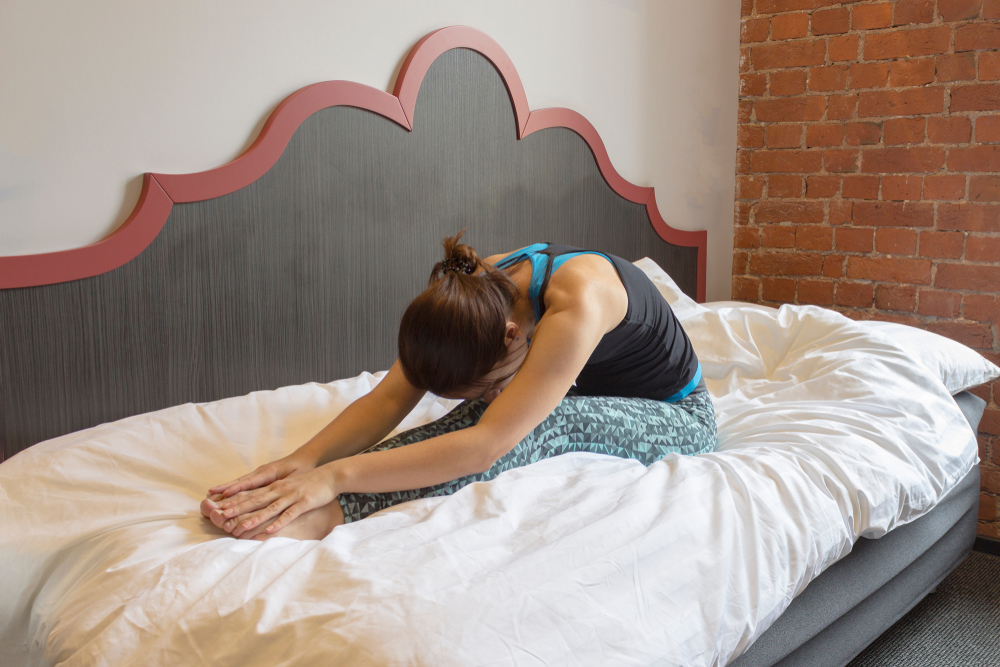
Paschimottanasana (Seated Forward Bend) helps calm the brain, stretch the back and legs, improve digestion, and stimulates the liver, kidneys, ovaries, and uterus. When practicing it can be helpful to place a folded blanket underneath your glutes to help with alignment.
To practice, start in a seated position on the floor or on your bed and extend the legs in front of your body. Press the heels forward with a gentle flex in the feet. Adjust your pelvis so it’s neutral, the shoulders should stay above the hips. Lift the top of the head towards the ceiling, bring the navel in towards the spine and keep the chest open. Begin to fold forward at the waist. You can reach the hands in front of you but avoid rounding the shoulders. Keep the spine long as you dwell in this posture.
Practice this posture anywhere between one to five minutes.
Baddha Konasana — Bound Angle Pose
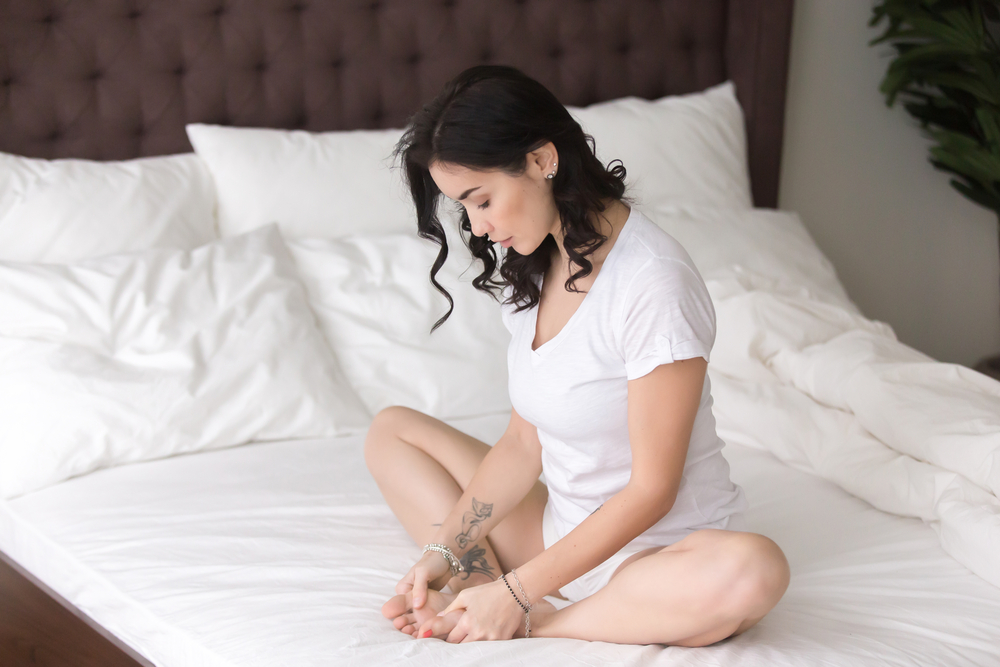
Baddha Konasana, also referred to as Bound Angle, Cobbler’s Pose, or Butterfly in English, is a relaxing posture that helps stretch your groin, inner thighs, and quadriceps. It’s a beginner-friendly pose that can help stretch the lower body before bed. Like the seated postures above, sitting on top of a blanket can help you ease into the posture especially if you have tightness in the hips.
From Paschimottanasana, bring the soles of the feet together as the knees bend outward to their respective sides. Guide the heels towards the groin area. Externally rotate the legs so the outside of the right knee is releasing downward towards the right-hand side of the floor and the left knee to the left side. Adjust the pelvis again so it’s neutral. Lift through the torso once more. With each inhale feel a sense of lifting through the spine with each exhale feeling grounded through the glutes.
Hold for two to four minutes.
For a deeper stretch, you can also turn this into a forward bend by keeping the lower body where it is but folding forward at the waist. Not only will this deepen the stretch in the groin area but it will also stretch the lower back.
Parivrtta Janu Sirsasana — Revolved Head to Knee Pose

Like many postures in this yoga sequence, Parivrtta Janu Sirsasana helps combat the effects of sitting. This gentle yoga pose focuses on stretching the upper body, specifically the side of the body while simultaneously stretching the back of the legs and inner groin area. It also focuses on the lengthening of the back muscles.
From Baddha Konasana, keep the left foot towards the groin area while extending and straightening the right leg outwards. Making sure your glutes are evenly into the floor or bed and the pelvis is neutral, extend both arms up towards the sky. Begin to bend in the side body and reach for the right foot. The right hand can come down towards your right leg but avoid collapsing into the side of the abdomen.
As you reach over, be mindful of the glutes. Keep them pressed down, specifically avoid lifting the left glute. Allow the body to passively stretch as opposed to aggressively reaching for the foot on the extended leg. Hold the posture for one to three minutes and then lift the torso up.
Come back into Baddha Konasana and then repeat on the left side for the same amount of time, unless one side is tighter than the other. If so, spend a little bit more time on the side that needs to be stretched.
Bhujangasana — Sphinx Pose
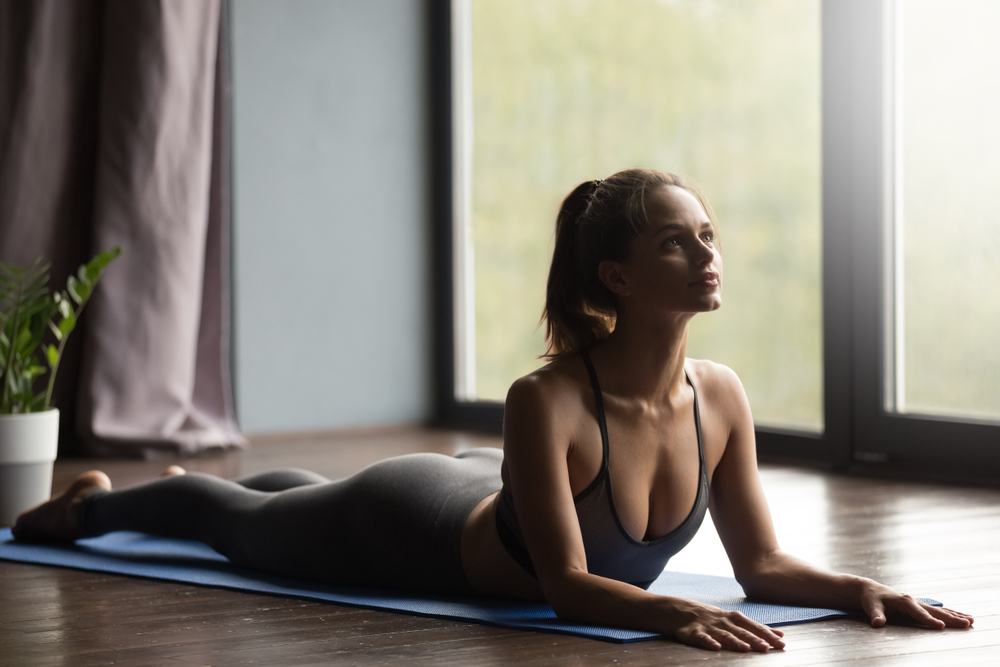
Bhujangasana is a backbend that can help with a restful night’s sleep as it helps release stress. Additionally, as most people spend hours at a computer desk, sitting down, or glued to their devices it helps relieve stored up tension in the body by stretching the chest, lungs, shoulders, and abdomen.
From Parivrtta Janu Sirsasana, bring the legs together and then roll onto your stomach in a prone position. Let the big toes touch unless this aggravates the lower back. If the back is aggravated take the feet out to about hip-distance apart. Place the elbows on the floor pressed underneath the shoulders as the forearms and hands extend forward. Lift the chest up while the shoulders soften away from the ears. Imagine shining the heart forward. The gaze is forward. Hold the posture between three to five minutes.
After completing the posture, allow the spine to roll down letting the chest and forehead come towards the floor. Bend the knees and allow the feet to sway side to side for the counterpose.
Balasana — Child’s Pose
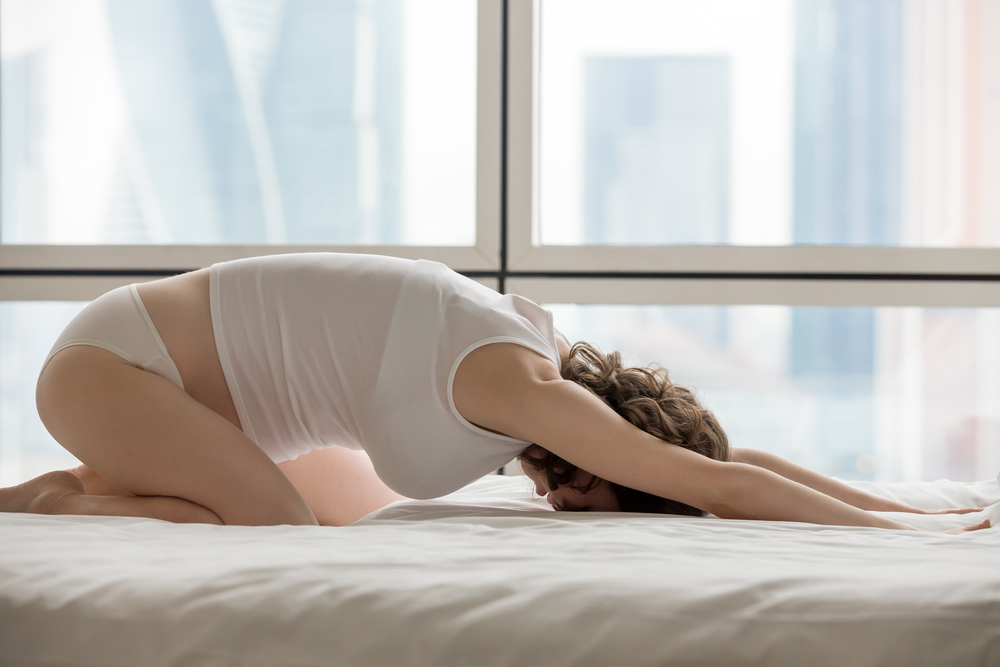
Balasana or Child’s Post is one of the first postures people learn in yoga. It is an excellent way to help calm the mind and body while relieving fatigue and stress. Additionally, it is an excellent way to stretch the hips and things while relieving tension in the neck and back4.
From Sphinx, transition through Balasana (Child’s Pose) and then release the sit bones towards the heels while allowing the knees and feet to come together. Lengthening through the neck and allowing the forehead to lower down towards the floor or even a pillow while extending the arms forward while still keeping them in line with the shoulders. If bringing the knees and feet together is challenging, create space for the body by bringing the knees out wider while still letting the toast hutch.
Practice this posture for two to three minutes.
Viparita Karani — Legs Up the Wall Pose
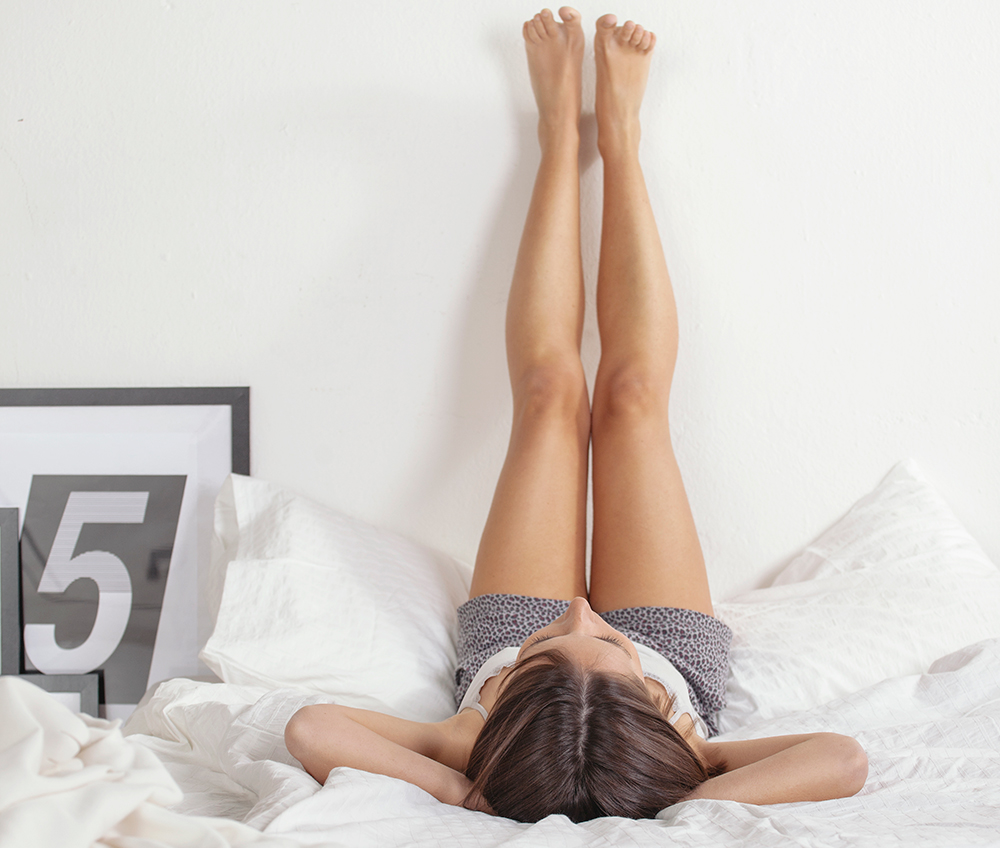
This simple posture is easy but extremely effective. This beginner-friendly inversion helps drain venous blood and lymph from the legs while conditioning the endocrine and cardiovascular systems.
Positioning yourself near a wall, bring your legs up the wall as you shift your back towards the floor or your mattress. Allow the feet to gently flex and release the arms to go wherever you like. Some people like the arms along their sides, while others like them on their belly or chest to help them feel their breath. The glutes and the back of the legs should be on the wall or as close as you can get them.
Hold the posture for two or three minutes or longer if it’s comfortable.
Sucirandhrasana — Pigeon Pose
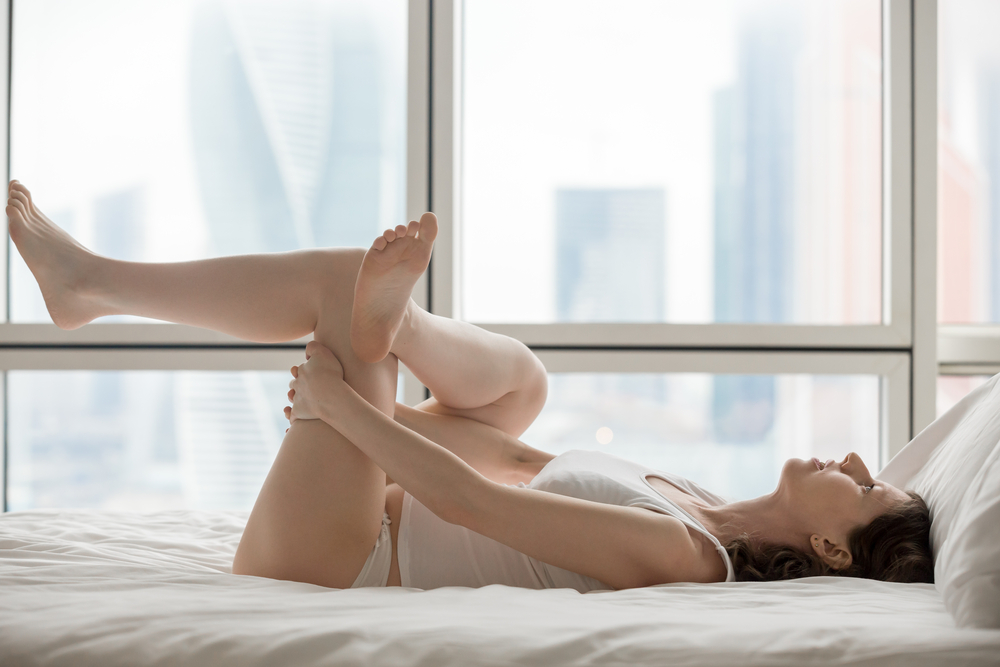
Eka Pada Rajakapotasana is an intense hip opener that can help relieve stress. However, it’s often hard on the knees and misalignment is so common that many practitioners don’t receive the intended benefit of the posture. A relaxing and restorative alternative is Wall Pigeon. Wall Pigeon is a gentle way to practice pigeon that is often easier for alignment purposes while not sacrificing the intense stretching possible from this intense hip opener.
From Legs Up the Wall, separate the feet so they are hip-distance apart. Place the right ankle on top of the left thigh and give a little flex in the foot to help protect the knee. If you already feel the stretch, you could stay here. If you can go further, begin to bend the left knee towards the chest as you try to place the sole of the left foot on the wall. Go as far as you are comfortable, however, you should go to any point where you feel pain.
Rest in the posture for one to two minutes before repeating on the other side.
Setu Bandha Sarvangasana — Bridge Pose
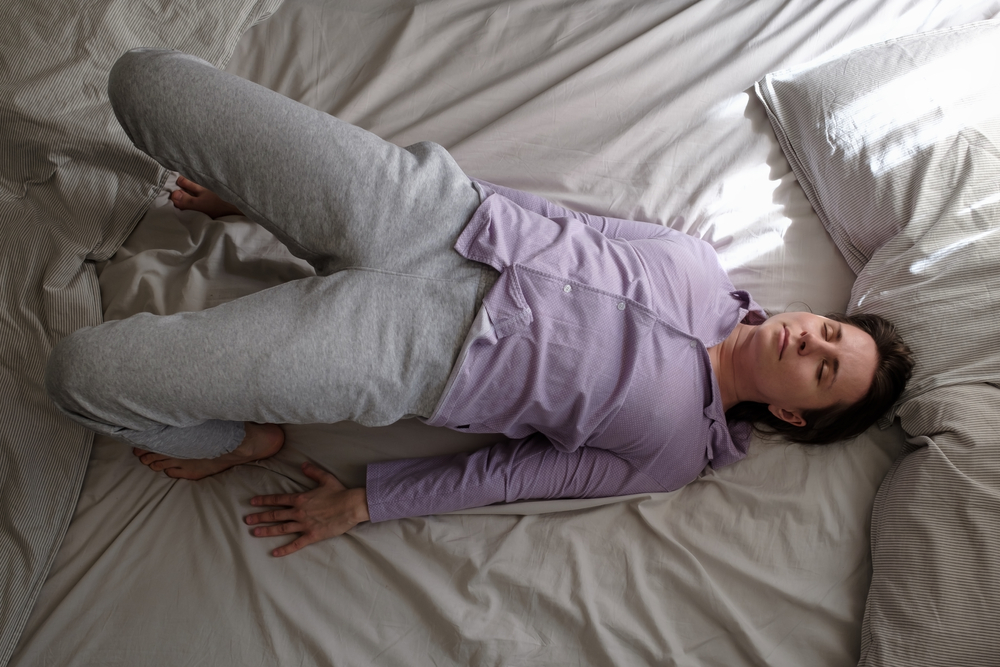
Bridge pose can help you ease into sleep, it helps calm the mind, alleviate stress, and potentially mild depression. Physically, it can help stretch the back, chest, and neck6. Setu Bandha Sarvangasana can also assist women experiencing menstrual cramps or alleviate symptoms of menopause.
To access this pose before bed, try the supported version. Have a pillow or yoga bolster nearby. Lie down on your back and bend the knees, the feet should be about hip-distance apart with the soles of the feet planted on the floor. As you come into this posture, keep the gaze towards the ceiling, and avoid looking right or left. Keeping the shoulders pressed into the floor lift the hips up and then gradually the abdomen and the chest. Place your bolster or pillow underneath the hips and lower back for restorative support.
Rest here between one to three minutes.
After completing this pose, come into a knee knock pose. Come out of Bridge gently by removing the cushion and slowly bringing the back down towards the floor. Keep the feet out hip-distance apart while the knees remain bent and then allow the knees to gently touch each other along the midline of the body. Hold this counterpose for approximately thirty seconds to a minute.
Supta Matsyendrasana — Reclined Twist Pose
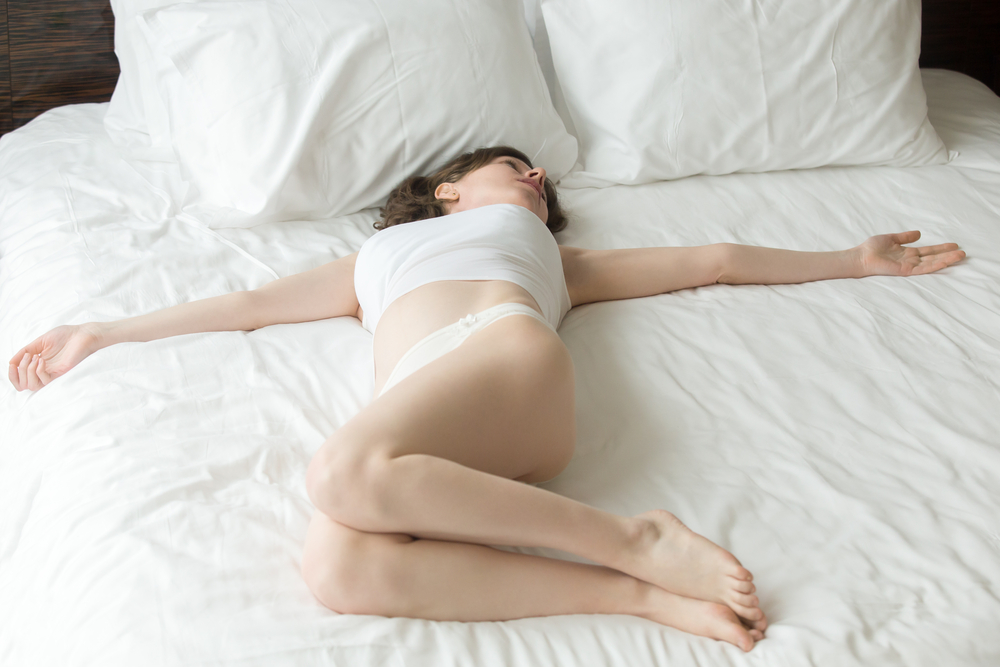
Reclined twists are helpful for sleep because they help release tension in the spine as well as restoring equilibrium in the nervous system,. It helps with mobility especially as modern living has our spine imbalanced hunching forward
Lying on the back, bring the knees in towards the chest. The arms will release out to the sides on the floor, in line with the shoulders with the palms facing up. Release the knees to the right-hand side of the floor. Try to keep the knees and feet together and the tops of the knees in line with the chest or as high as the body will allow. Look in the opposite direction before repeating on the opposite side. Practice each side for about one minute.
Savasana — Corpse Pose
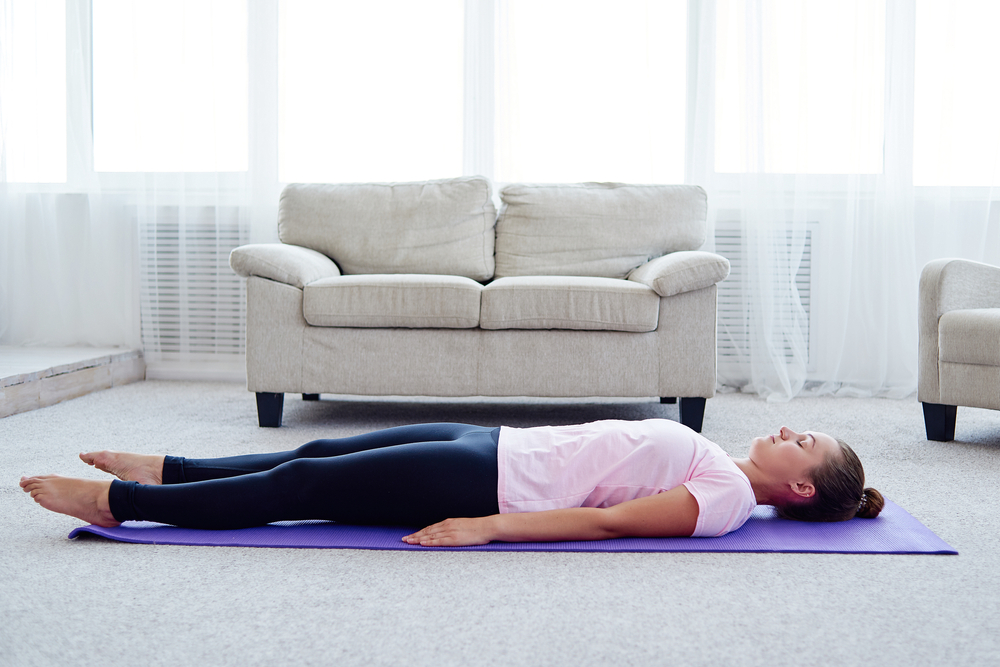
No yoga sequence is complete without Savasana or Corpse Pose. After these relaxing postures, Savasana helps integrate the practice by allowing the mind and body to relax. To practice, lie down on your back. Let the feet release outward. The arms can come to the side of the body with the palms facing up. It could be helpful to cover up with a blanket if you’re cold or place a folded blanket underneath the head and shoulders.
Close the eyes and allow the body to relax for either several minutes or simply allow yourself to drift off into sleep. Yoga can help individuals sleep better. While this sequence was created as a wind-down routine to practice before bed, it can be practiced at any time during the day and the benefits will still be impactful.
What's Your Reaction?
A graduate of Arizona State University, Nicole Baker is a force to be reckoned with in the realm of health and wellness. She studied behavioral health, which propelled her desire to live holistically and share her knowledge with other like-minded individuals.






